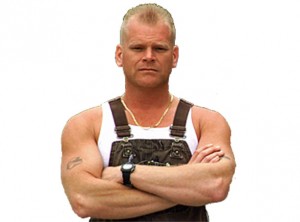 So you’ve bought a house in Toronto and it needs some work. It’s hard to resist the lure of granite counters and new hardwood floors, but spending unsexy money to make sure your home is dry, safe and standing is absolutely critical.
So you’ve bought a house in Toronto and it needs some work. It’s hard to resist the lure of granite counters and new hardwood floors, but spending unsexy money to make sure your home is dry, safe and standing is absolutely critical.
What should you fix first? I can’t think of anyone better to turn to than the home guru himself, Mike Holms. Here are his tips on deciding what to fix first (from the Holmes Inspection book, 2008):
1. Focus on safety. Address any issues that might pose a risk to you, your family or others who may come to your house. Look closely at steps, handrails and electrical (especially near sources of water). Get a licensed electrician to help you identify problem areas and make long-term plans for electrical upgrading if necessary.
2. Deal with the structure. If you see any problems with your foundation shifting or sinking, don’t ignore them. They’re not going to get better on their own and they’re not going to get cheaper to repair. But they can get worse and they can cause a whole whack of other problems throughout your house if they’re not addressed.
3. Work from the outside in. Make sure all exterior systems (roof, eavestroughs, exterior sheathing and foundation) are in good working order to keep moisture from entering the building envelope. Excavating around your house to seal the foundation properly can cost a fair bit of money, but it’s an investment that will dry out that basement once and for all and protect the interior of your house.
4. Think about fuel efficiency and long term cost savings. Invest in windows, mechanicals and insulation. Don’t throw money away by keeping an inefficient furnace going year after year; invest in a high-efficiency model that will give you immediate results. Same goes for old windows that are letting in drafts. Replace them with tighter windows and make sure your installer insulates properly around them. Think about a hot-water-on-demand system and get rid of your hot water heater. Finally, insulate your walls where possible and make sure your attic is properly sealed and insulted from the rooms below. Othewise, all that hot air (and your money) will literally go through the roof.
5. Kitchens and bathrooms, the right way. Don’t settle for cosmetic upgrades. When it’s time to renovate a kitchen or bathroom, it’s usually time to open up the walls and upgrade plumbing and electrical too. It’s more mess and more money than a facelift but it’s worth it for the quality in the end.
6. Finishes: floors, walls, ceilings, cabinetry, trim. If your home is dry, solid and efficient, you can turn your attention to those high-end finishes you’ve wanted: granite countertops, slate flooring, built in shelving for the living room – whatever’s on your list.
Owning an old Toronto house can be a lot of fun, but it’s also a lot of work. Unsexy money is some of the best money you can invest in your home.
